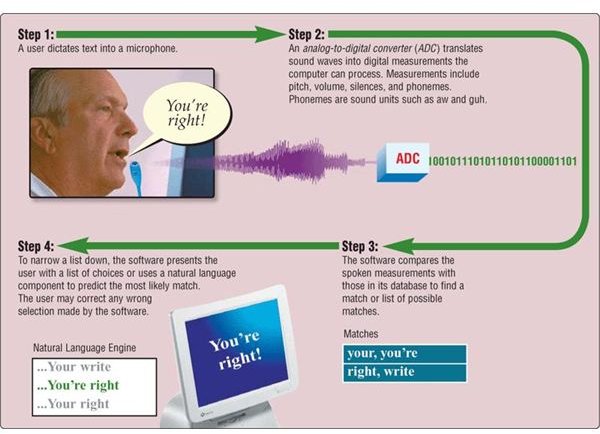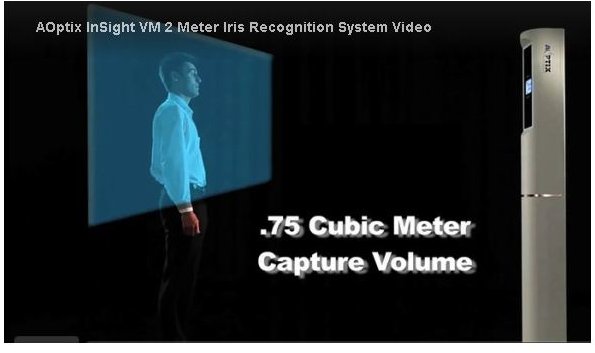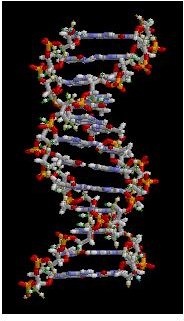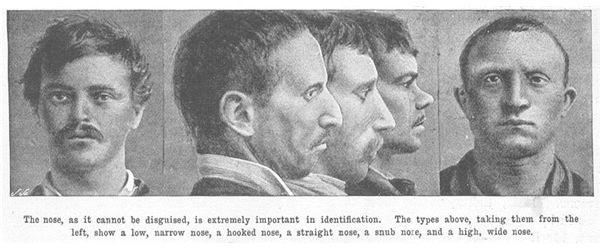A Look at Biometrics History and Biometric Devices
Bertillonage
Biometrics first appeared in the 1800s with a system of body measurement called Bertillonage named after an anthropologist and police desk clerk, Alphonse Bertillon. The system took eleven bodily measurements including standing height, sitting height (length of trunk and head), distance between fingertips with arms outstretched, as well as size of head, right ear, left foot, digits and forearm. In addition, distinctive personal features, such as eye color, scars and deformities were recorded as well.
The problem with this approach was that it was inaccurate because it was a system of measuring human physical traits such as strength, size, reach and mobility, and two people could come up with different measurement numbers on the same body part.
Fingerprinting
Although it was first used in 14th Century China, it was for signature purposes, not identification. Biometric history of fingerprinting did not develop until the 19th Century when Dr. Henry Faulds, while working in Tokyo, noticed that fingerprints could help identify criminals. He published his ideas in Nature, the science journal, in 1800.
Later, William Herschel began to use fingerprints in the 1870s as a form of identification. Subsequently, Francis Galton announced his observation that no two fingerprints were the same.
That observation lead to the Edward Henry fingerprint classification system. Each individual finger has a numerical value, beginning with the right thumb and ending with the left pinky. It divides fingerprint records into groupings based on pattern types such as an “arch,” “whorl,” or “loop.” This method lets you search fingerprint records. It identifies the pattern type and the subsequently assigned numerical value is matched to a data record.
See Also: How Accurate Are Fingerprint Biometric Devices?
Voice Recognition
Another area of biometric history of importance is voice and speech recognition. Speech recognition security uses a non-contact method; that is, you do not need to see or to touch the person to be able to recognize

him. Speaker verification is growing because speech is easy to obtain without the addition of dedicated hardware. This is largely a software-initiated program. You speak into a microphone, another device records your voice, and future voice recordings are compared to the original one. If they match, the person is the same one on the security recognition system.
Although interest in voice recognition technology goes back to 1936, development was slow until microprocessors and PCs were able to speed the voice recognition. By the 1980s, there were two distinct types of commercial voice products. One offered speaker-independent recognition of small vocabularies for telephone transaction processing. The second focused on the development of large-vocabulary voice recognition systems so that text documents could be created by voice dictation.
Today, voice recognition devices are the byproduct of sophisticated CPUs and memory. They are able to access programs that do the processing quickly and efficiently.
See Also: The Best Free Voice Recognition/Dictation Software
Iris Recognition

Iris recognition systems employ technologies that photograph the iris, and then scan the eye at a future time

to compare the two irises. If they are the same, the person is the same. Demand for iris recognition devices has grown because of concerns over identity fraud and other kinds of abuses of the law. This technology is one of the newest because developments in optical science technology had to come along before companies could develop a new application. One company that did is AOptix Technologies, which can accomplish iris recognition more than 6 feet away from the subject.
See Also: Biometric Access Control Devices (Page 2 of 2)
DNA Analysis
Challenges to some of the other biometrics from defense attorneys or criticism from scientists about their unreliability led to the development of DNA analysis to confirm the identity of a person, especially when it came to criminal convictions. As the science of DNA analysis developed so were devices that allowed personal identification possible. Today this is especially true for crime scenes where blood samples are present and specific identification is required. Currently, the possibility of two people sharing the same DNA profile is 1 in 100 billion.
The University of Arizona has developed an instrument that will perform DNA analysis in hours instead of weeks. Also researchers from the Forensic Science Service developed a process where an instrument loaded with a DNA processing cartridge can complete a DNA profile in less than four hours. These enhancements, plus the accuracy that they demonstrate overall, makes DNA biometrics a coveted element of identification.

Indeed, one of the most significant developments in DNA analysis has been the Innocence Project. This organization actively pursues proving the innocence of convicted criminals by using DNA analysis to show that the conviction was incorrect.
See Also: Who Invented DNA Fingerprinting?
Source
Biometrics History (U.S. government website) at https://www.biometrics.gov/Documents/biohistory.pdf
Bertillonage
Bertillonage biography from All-About-Forensic-Science.com, Alphonse Bertillon: Forensic science pioneer. Retrieved at https://www.all-about-forensic-science.com/alphonse-bertillon.html.
Image Wikipedia Commons in public domain https://en.wikipedia.org/wiki/File:The_speaking_portrait.jpg
Voice Recognition
Weiqi Li, University of Michigan at Flint, School of Management business courses. Voice Recognition: https://spruce.flint.umich.edu/~weli/courses/bus181/notes/chap5.html (Image used with permission.)
IRIS Recognition
Image: Public Domain (US Marines) Author: Gunnery Sergeant Michael Q. Retana, U.S. Marine Corps
https://en.wikipedia.org/wiki/File:USMC_Sergeant_identifies_Baghdaddi_city_council_member_with_iris_scanner.jpg
AOptic Technogies, https://www.aoptix.com/iris-recognition/product/insight-vm (image used with permission)
DNA Analysis
How to Read DNA Test Results by efrontiers right here on Bright Hub
Forensic internet magazine. System matches suspect DNA with samples in 4 hours. Author unidentified. https://www.forensicmag.com/news/system-matches-suspect-dna-crime-samples-4-hours
Wikipedia Commons -Image Public Domain by Brian0918: https://en.wikipedia.org/wiki/File:ADN_animation.gif
The Innocence Project https://www.innocenceproject.org/?gclid=CNGyy9md9KYCFUHt7Qod3lZzEw
